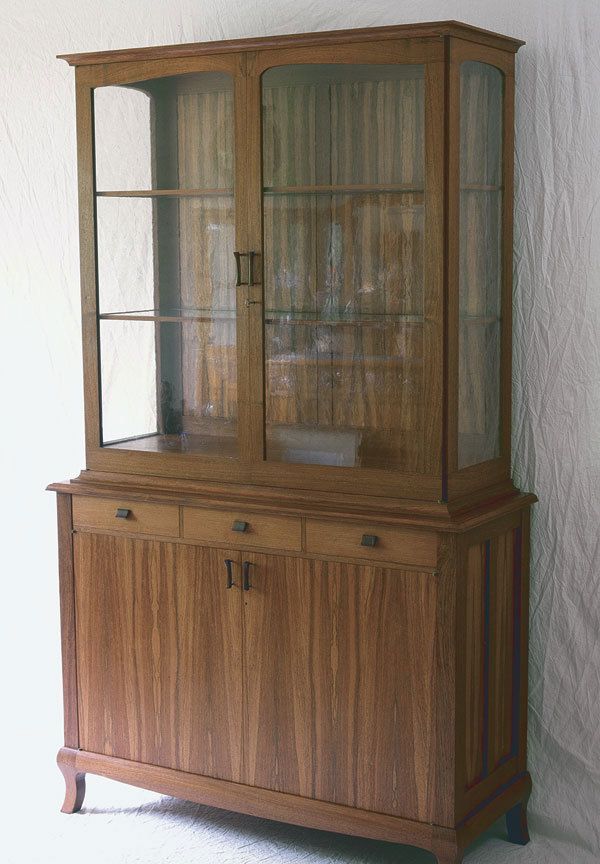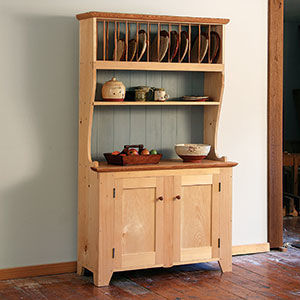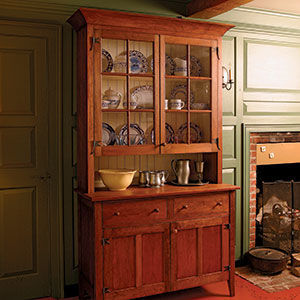A Short History of Cupboards

One or more boards for storing cups formed the first “cupboard.” As a place to deposit leftover or surplus food for distribution to the poor as a form of alms, built-in shelves, and later, freestanding enclosed shelving units — or cupboards with ventilated doors — became known as almeries or aumbries. Eventually, the term “aumbry” was reserved for a variety of cupboard designed for valuables, and the term “cupboard” became more generally restricted to the storage of food and plate.
A further differentiation involved the display of cups and plate. Cupboards used for other kinds of storage became completely enclosed, and gradually acquired other names, such as armoires, presses, and wardrobes, while those pieces used for food and plate remained characterized by being at least partially open, and developed into a variety of other forms, such as sideboards, dressers, buffets, and court cupboards.
Although many of these terms are still in common use, there is, and indeed appears always to have been, considerable confusion regarding any definitive definition; many terms have been used interchangeably. Nevertheless, the following may be taken as a rough if not necessarily exclusive guide:
First, despite the varied paths that the original cupboard has followed down the ages, the term “cupboard” often implies a built-in storage unit, similar to the enclosed storage alcoves of medieval times. In the 18th century, for example, cupboards frequently formed part of the paneling of a room, in much the same way that closets with mirrored doors often form part of the walls of contemporary bedrooms.
Being built-in is not, however, as absolute a requirement as having doors. Although pieces such as whatnots, or the more elegantly, and perhaps more accurately, named étagère, are both direct descendants of the original cupboard, being essentially free-standing arrangements of shelves, they do not have doors, and no one would dream of calling them cupboards. On the other hand we can regard a hutch, which began as a chest on legs with doors in the front rather than a lid on top, but which then also appeared with a sloping lid on top, typically for storing grain, as a cupboard.
Similarly, a commode, first seen in the 18th century, may be thought of as a cupboard with interior drawers, although it is equally plausible to regard it as a form of chest-of-drawers. Although when built-in, a cupboard may be as large as a press or wardrobe (see below), cupboard often suggests a piece of furniture less tall.
An old, and now virtually obsolete, term for a freestanding cupboard dedicated to more general storage is “press,” of which varieties such as linen press, clothes press, and even china press were common. Furthermore, a press might well be fitted not only with interior shelving but also with drawers as well as doors.
The term “armoire,” although derived from the term “almery” (see armoire, above), is now virtually synonymous with wardrobe — the modern term for a type of clothes press, and generally implies a tall, freestanding cupboard used for clothing storage. As such, although it may contain shelves, tills, and even drawers, it is chiefly characterized by an open interior space large enough in which to hang suits, gowns, dresses, and coats.
Last, as with many other types of furniture, cupboards and many of their derivatives, may be defined by structural and locational features, for example, corner cupboards and hanging or wall cupboards.
Graham Blackburn is a furniture maker, author, and illustrator, and publisher of Blackburn Books (www.blackburnbooks.com) in Bearsville, N.Y.






















Log in or create an account to post a comment.
Sign up Log in